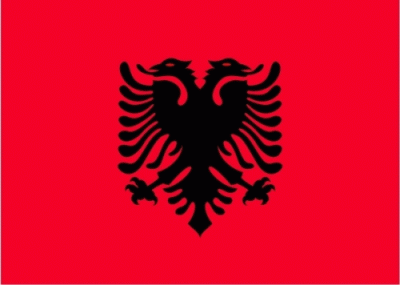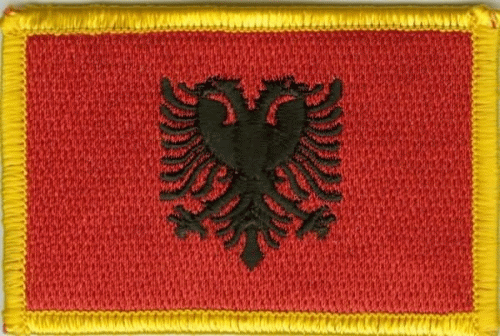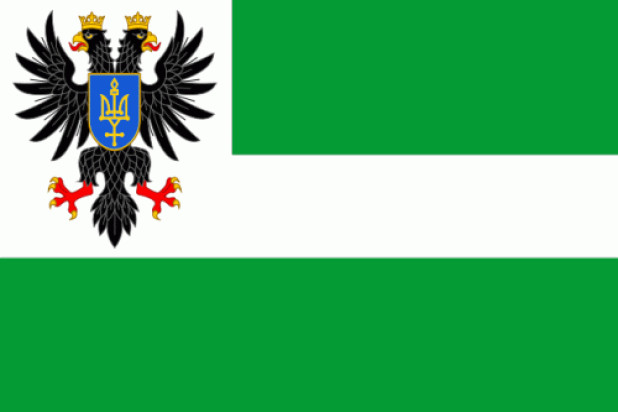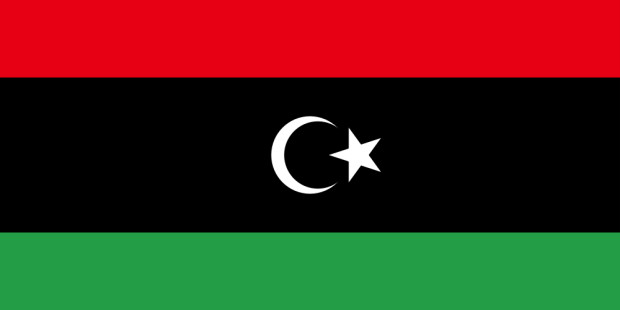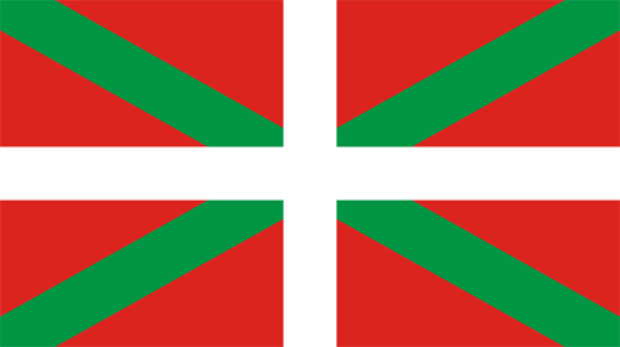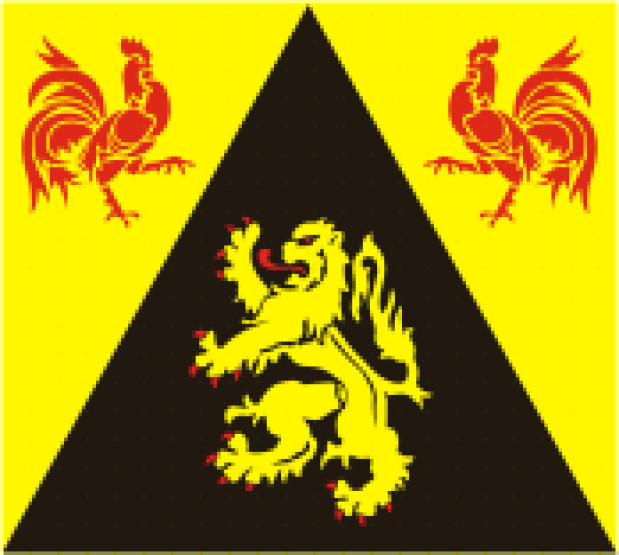Bandiera di Albania
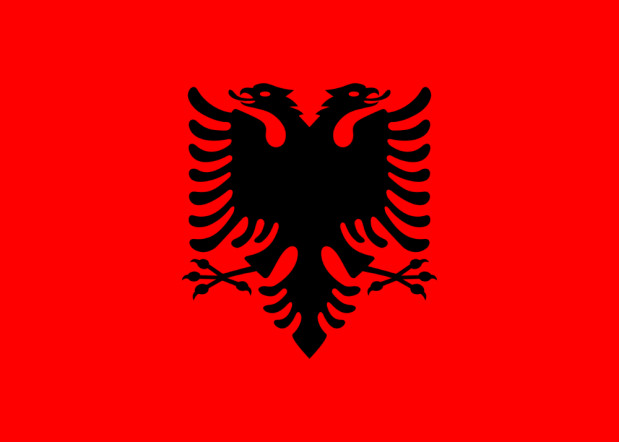
Ascolta l'inno
Il più venduto dal nostro negozio di bandiere
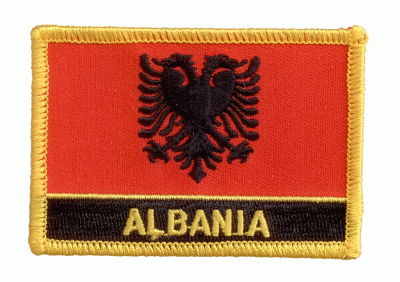
Albanien Aufnäher / Patch mit Schrift
2,90 €
Mostra nel negozio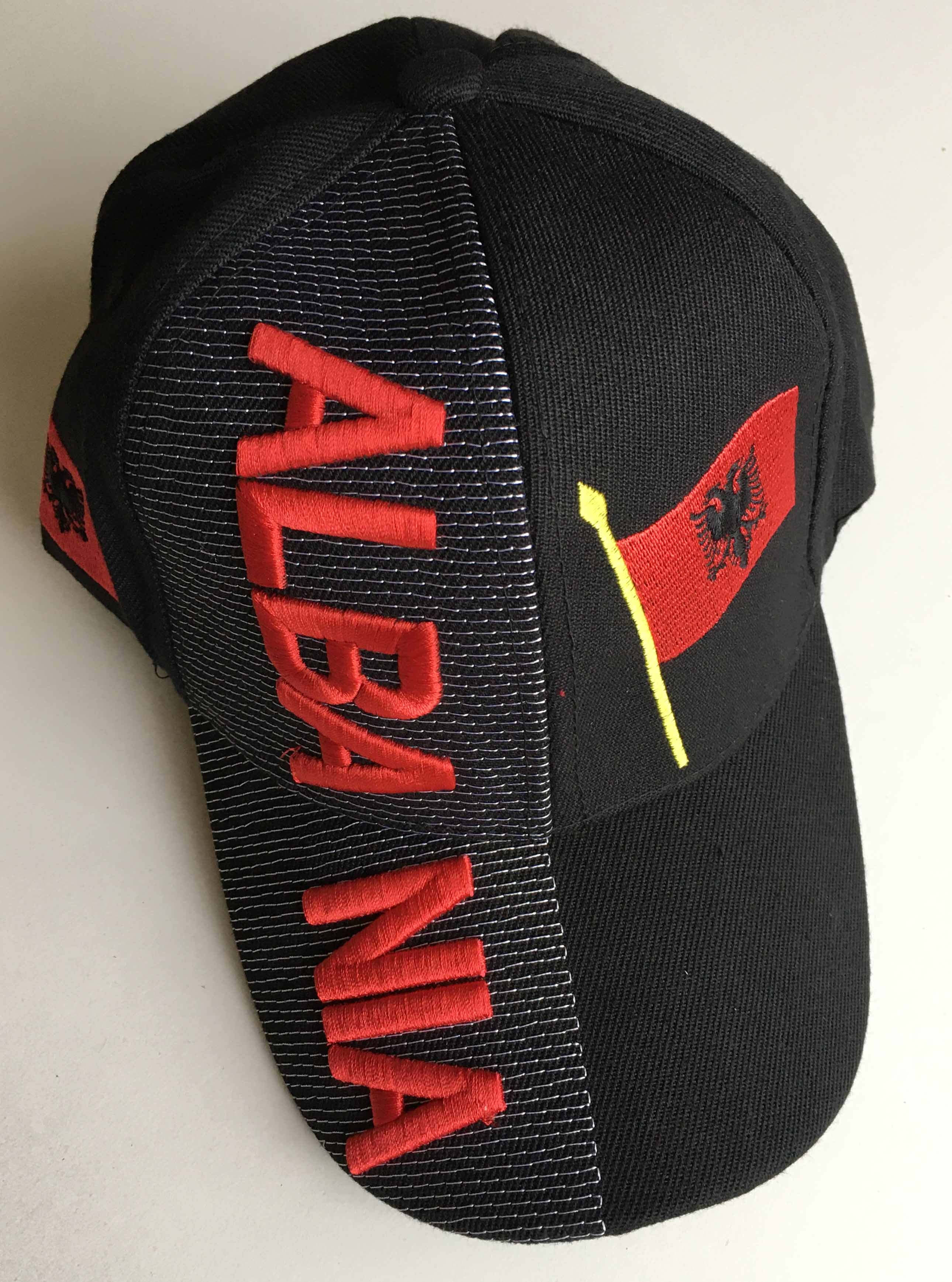
Albanien Baseballcap
9,90 €
Mostra nel negozioConoscenze di base
La bandiera dell'Albania risale direttamente all'eroe nazionale Skanderbeg. Egli era di origine nobile e il suo vero nome era Giorgio Castriota. Egli guidò una rivolta antiturca tra il 1443 e il 1468, dopo che l'Impero Ottomano, in continua espansione, dal 1385 aveva sconfitto il residuo bizantino dell'Epiro, iniziando così a sottomettere il territorio dell'attuale Albania. Durante la rivolta, Skanderbeg utilizzò bandiere rosse con un'aquila bicipite nera. Skanderbeg si ispirò probabilmente alla bandiera bizantina. Si presume che abbia giocato un ruolo anche la leggenda secondo cui gli albanesi sarebbero discendenti delle aquile. Dopo la dichiarazione di indipendenza dall'Impero Ottomano, il 28.11.1912, la vecchia bandiera fu ritirata e fu introdotta una bandiera rossa, con un'aquila bicipite nera e una stella a sei punte sopra di essa. La stella doveva ricordare agli albanesi che, indipendentemente dalla loro religione, hanno lo stesso cielo stellato sopra le loro teste. Quando il principe tedesco Wilhelm zu Wied divenne principe d'Albania nel 1914, la bandiera fu leggermente modificata: poiché parte dell'antico Epiro apparteneva ormai al territorio albanese, agli artigli dell'aquila furono aggiunti i quattro fulmini dorati che rappresentano questo Paese. Quando Ahmed Zogu divenne re albanese il 01.09.1928, avviò un cambiamento nella bandiera. La stella bianca e i fulmini furono rimossi e al posto della stella fu aggiunto l'elmo dorato di Skanderbeg. Quando l'Italia occupò l'Albania nel 1939, la bandiera dell'Albania fu nuovamente cambiata: All'aquila fu aggiunta la corona albanese e due fasci littori neri. Anche la resistenza anti-italiana, sotto la guida comunista, sventolò la bandiera rossa con l'aquila, ma con una stella a cinque punte gialla sopra l'aquila. Questa bandiera fu introdotta ufficialmente il 15.03.1946 in occasione della fondazione della Repubblica Popolare. Con le dimissioni dell'ultimo presidente comunista, la stella è stata nuovamente rimossa dalla bandiera il 07.04.1992. In concomitanza con la fondazione della Repubblica Popolare, fu introdotto anche un diverso stemma. L'aquila era circondata da spighe di grano e sopra l'aquila, come sulla bandiera, c'era una stella rossa a cinque punte delineata in giallo. Le spighe erano collegate con un nastro rosso, che conteneva la data del 24 maggio 1944. In questo giorno si formò a Permeti il cosiddetto "comitato di liberazione antifascista". Il 07.04.1992 furono inizialmente rimossi solo il nastro con la data e la stella, ma dal 22.05.1993 è stata utilizzata solo l'aquila bicipite nera nello scudo rosso.
The flag of Albania goes directly back to the national hero Skanderbeg. He was from noble origin, and was called really George Kastriota. He led an anti Turkish revolt between the years 1443 and 1468, after the every more extending Osmanic Empire since 1385 struggled down the Epirus, the remainding Territory of Byzantium, and started therewith to submit the territory of the today's Albania. During the revolt Skanderbeg used red flags with a black twin-headed eagle. Probably Skanderbeg was inspired from the Byzantian flag. Ostensibly should have played a role, too, the legend, that the Albanians are descendants of the eagles. After the declaration of independence from the Osmanic Empire on the 28th of November in 1912, they remember the old flag, and introduced a red flag, with a black twin-headed eagle and a six-jagged star above. The star should remember the Albanians, that they, equally which religion they have, have the same sky above the heads. As the German prince Wilhelm zu Wied get in 1914 prince of Albania, they changed the flag a few, because as now belongs to the Albanian territory a part of the old Epirus, were added the this land representing ever four golden flashes in the claws of the eagle. As on 1st of September in 1928 Ahmed Zogu gets Albanian king, he has caused a changing of the flag. The white star and the flashes became removed, and instead of the star was placed the golden helmet of Skanderbegs. As Italy occupied in 1939 Albania, the flag of Albania was changed again: The Albanian crown became added to the eagle, just as two black Lictor bundles. The anti Italian resistance, under communist command, used likewise the red flag with the eagle, in which was placed above the eagle a yellow bordered five-jagged star. This flag was officially introduced on 15th of March in 1946 in context with the founding of the people's republic. With the resignation of the last communist president the star was deleted from the flag on 7th of April in 1992. In context with the founding of the people's republic was introduced another coat of arms, too. The eagle gets surrounded by ears, and above the eagle was placed, like on the flag, a red yellow-bordered five-jagged star. The ears were bonded with a red ribbon, which contained the date 24th of May in 1944. On this Day gets formed in Permeti a so named "anti faschistic liberation commission". On the 7th of April in 1992 was initially removed the ribbon with the date and the star, however is in use since the 22nd of May in 1993 only the black twin-headed eagle in a red shield.
Colori della bandiera
- ESADECIMALE
- #DA291C
- RGB
- 218, 41, 28
- CMYK
- 0, 95, 100, 0
- RAL
- 3028
- Pantone
- 385
- ESADECIMALE
- #000000
- RGB
- 0, 0, 0
- CMYK
- 0, 0, 0, 100
- RAL
- 9005
- Pantone
- 9005
Questo è ciò che ChatGPT sa sul flag di Albania
-
La bandiera albanese è un simbolo dell'indipendenza del Paese ed è stata adottata il 7 aprile 1992. È composta da un triangolo nero, rosso e oro su un quadrato bianco. I colori rappresentano le radici albanesi e la nazione moderna.
-
La bandiera nazionale albanese è in uso dal 1912. È costituita da un triangolo nero-rosso-oro disposto su uno sfondo bianco. I colori rappresentano la cultura, la storia e le tradizioni albanesi. La bandiera fu introdotta nel 1912 da Ismail Qemali, il fondatore dell'Albania moderna.
-
La bandiera nazionale albanese è composta da un quadrato rosso e uno nero separati da un emblema bianco. L'emblema bianco consiste in un'aquila bicipite seduta su una roccia nera. L'aquila è decorata con un collare dorato e una fascia dorata intorno al petto. La bandiera simboleggia la nazione albanese e la sua unità. È un ricordo del passato albanese e un simbolo di speranza e coesione.
Scoprire qualcosa di nuovo
Bandiere casuali dal nostro ampio database di bandiere. Lasciatevi sorprendere.
